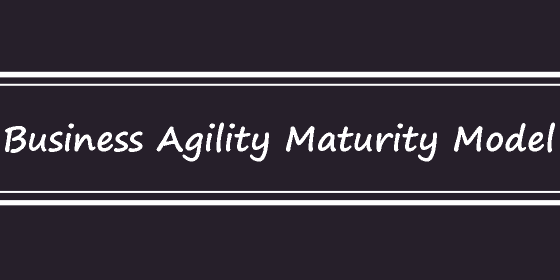Business Agility Maturity Model

A Business Agility Maturity Model is a framework used to assess and measure an organization’s level of business agility. It provides a structured approach to understanding how well an organization is adapting to change, embracing Agile and Lean practices, and continuously improving its processes to respond to market dynamics and customer needs.
Key characteristics of a Business Agility Maturity Model include:
- Multiple Levels of Maturity: The model typically defines several levels or stages of maturity, ranging from the lowest (less agile) to the highest (highly agile).
- Assessment Criteria: The model outlines specific criteria and indicators to evaluate an organization’s agility across various dimensions, such as leadership, culture, processes, technology, and customer focus.
- Scoring Mechanism: Organizations are assessed and assigned scores based on their level of maturity in each dimension.
- Self-Assessment or External Assessment: The assessment can be conducted internally by the organization’s own teams or externally by independent consultants.
- Progressive Improvement: The Business Agility Maturity Model aims to drive continuous improvement by providing insights into areas where an organization can enhance its agility.
- Benchmarks and Best Practices: The model may provide benchmarks and best practices to guide organizations in their agility journey.
- Support for Agile Transformation: The Business Agility Maturity Model helps organizations identify strengths and weaknesses, guiding their efforts in Agile transformation and continuous improvement.
- Customization: The model can be tailored to suit the specific context and needs of different industries and organizations.
By using a Business Agility Maturity Model, organizations can gain a clear understanding of their current state of agility and identify areas where they can improve to become more responsive, innovative, and customer-centric. It helps leadership and teams align on the vision for business agility and set realistic goals for their Agile journey.
Keep in mind that the effectiveness of a Business Agility Maturity Model depends on its relevance to the organization’s goals, culture, and specific challenges. It is not a one-size-fits-all solution, and its success lies in how well it aligns with the organization’s unique context and drives meaningful change towards becoming a more agile and adaptive business.